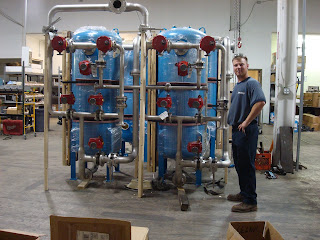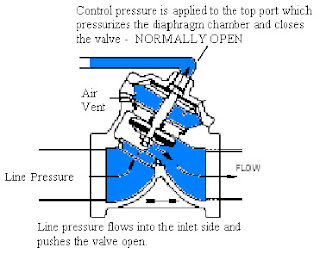Res-Kem partners with Purolite Company to perform the resin analysis. The three most common tests we see performed are:
Other tests that can be performed are:
but we will explain the latter in the detail.
First, a sample of the resin bed is required, so it can be analyzed. Taking a good sample is very important to get proper results on the analysis performed. We recommend a sample be taken from various levels of the resin bed and within different areas of the bed. We suggest using a piece of PVC pipe, ½” or 1” in diameter and long enough to get down into the resin. Stick the pvc pipe all the way down the resin bed to pull up a sample. Think of a soda straw, when you place your finger on the top of the straw in soda, and pull up the straw with soda inside it. Now that we have our sample, lets look at the resin tests.
Total Capacity Test:
The total capacity of an ion exchange resin is defined as the total number of sites available for exchange per some unit weight or unit volume of resin. The capacity is expressed in terms of millequivalents per milliliter MEQ/ML for wet resin. For example, new strong acid cation resin, typically, has a total capacity spec of 2.2 MEQ/ML. A resin sample will get compared to new virgin resin for the test. Based on our experiences with Purolite, if a total capacity analysis shows more than a 20% difference compared to new resin, one should consider a resin change out. In the case of the SAC resin, a change out would be suggested if the total capacity test of the sampled resin shows a spec of 1.75 MEQ/ML or less compared to a new spec of 2.2 MEQ/ML.
Moisture Capacity Test:
The moisture content of a resin is a measure of its water holding capacity or swelling. New Cation Softening resin will usually have a water retention spec of 45-48%. Type I Strong Base Anion resin the Chloride form has a spec of about 48-54% moisture. If a resin analysis is to be done, it is important to test the moisture content of the resin sample to see if it’s within spec. An increase of the moisture content in resin is a clear indication of oxidation occurring on the resin. The resin tends to become soft, which leads to pressure drop and channeling, and will eventually affect the capacity of the resin. Going back to the softening resin spec, if we see an increase of more than 6% on the higher spec of 48%, we will throw up a red flag.
Bead Integrity Test:
Our bead integrity test is a percentage measurement of whole, cracked, & broken resin beads.
 For example, test results will show the following: 94-4-2. 94% would be whole, 4% would be cracked, and 2% would be broken. Broken beads usually occur over time and are a normal part of wear and tear on the resin. Usually, a thorough backwashing of the resin bed will remove broken beads and fines. If broken beads accumulate over time because they are not flushed from backwashing, and the percentage test results of broken beads are shown to be in double digits, their presence will result in channeling of the resin bed and pressure drop.
For example, test results will show the following: 94-4-2. 94% would be whole, 4% would be cracked, and 2% would be broken. Broken beads usually occur over time and are a normal part of wear and tear on the resin. Usually, a thorough backwashing of the resin bed will remove broken beads and fines. If broken beads accumulate over time because they are not flushed from backwashing, and the percentage test results of broken beads are shown to be in double digits, their presence will result in channeling of the resin bed and pressure drop.
For further information:
On our resin analysis, please visit our website.
Please contact me, Mike Polito, when you have completed the Resin Analysis Request Form.
Here are the resin analyses charges.










